#fubu baggy
Explore tagged Tumblr posts
Text





73 notes
·
View notes
Text
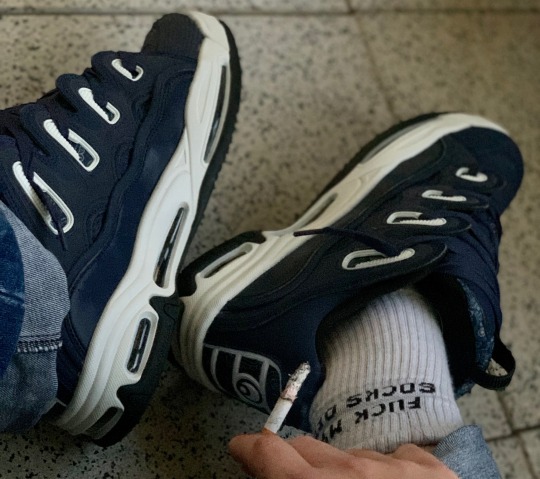

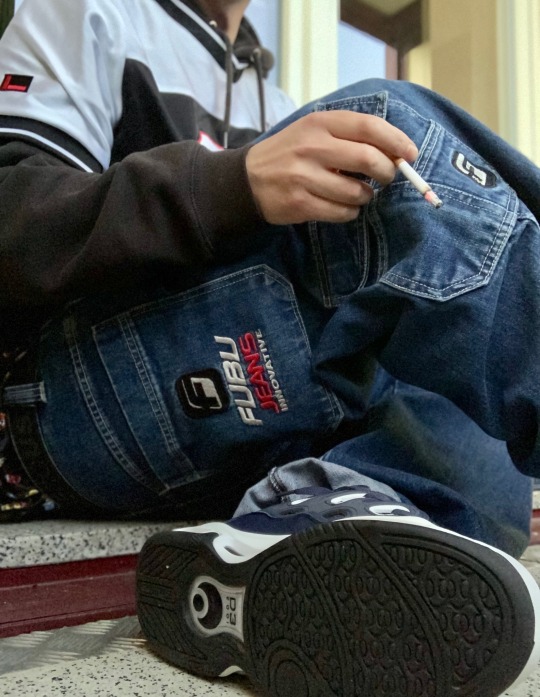
smoking and sagging in oldschool Fubu Innovative Baggy
#gay smoker#smoking#osiris d3#smokefetish#sagging#baggysagging#fubu jersey#fubu baggy#fubu innovative#gayboy#gay skater#baggystyle
275 notes
·
View notes
Text


61 notes
·
View notes
Photo

1998.
#Fubu#jeans#black men#photo#photoshoot#usa#advertising#vintage#throwback#90s#90s fashion#street fashion#baggy#clothes#ad#my uploads#me#magazine
490 notes
·
View notes
Text
4.2.2024
Potřebuju sehnat červenej volnej crop. Nejlíp s nějakým potiskem. Mám to přesně v hlavě, ale nedaří se mi nic najít. Chci hrozně nosit cropy, ale stydím se za svoje břicho. Není moc pevný a hlavně chlupatý žejo. Chvilku jsem přemýšlela a napadlo mě, že to břicho vlastně nemusí bejt vidět. Do hlavy se mi dostal úplně perfektní outfit. Pár červenejch J's on my feet k tomu bílý oversized baggy fubu jeans, černá stahovací košilka (protože mám fuj fuj břicho),kratičkej fishnet top a přes to ten červenej crop. K absolutní dokonalosti už chybí jen krátká bunda. Jakože u mě v hlavě to vypadá fakt dobře lol, ale nevim připadám si na to stará. Asi chci něco dohnat. Na druhou stranu mě přesně ty kecy, že by se ženy měly oblíkat úměrně svýmu věku, děsně serou. Myslela jsem, že zmatený období už mám za sebou. Asi budu "nějak" zmatená celej život.
15 notes
·
View notes
Text
The Birthplace of a Cultural Revolution: Exploring the Origins of Hip-Hop and its Influence on Fashion

Welcome to our blog, where we embark on a journey to uncover the origins of hip-hop and its profound impact on both music and fashion. In this post, we delve into the birthplace of this cultural revolution, tracing its roots back to the vibrant streets of the South Bronx. We'll also explore the close connection between hip-hop fashion and street style, highlighting how the fashion choices of early hip-hop pioneers became intertwined with the very essence of the genre. So, let's rewind to the past and uncover the rich history that birthed hip-hop and shaped its unique sense of style.
The Birth of Hip-Hop:
Hip-hop emerged during the 1970s in the South Bronx, New York City, as a creative and expressive response to socio-economic challenges faced by African American and Latino communities. Its inception can be attributed to the fusion of various elements, including DJing, MCing (rapping), graffiti art, and, of course, dance. The neighborhoods became a breeding ground for innovation, and the streets served as the backdrop for this cultural movement.
Street Style and Self-Expression:
Hip-hop culture has always been rooted in individuality and self-expression. Early pioneers expressed their identity and creativity through their clothing, which laid the foundation for the iconic hip-hop fashion and street style we know today. In the face of limited resources, they repurposed and personalized clothing, creating their own unique looks that set them apart from mainstream fashion.
Influence of African and African American Aesthetics:
Hip-hop fashion draws inspiration from African and African American aesthetics, paying homage to cultural heritage and ancestral roots. Bold and vibrant colors, patterns, and prints reminiscent of traditional African garments found their way into the fashion choices of early hip-hop artists. This infusion of cultural elements became a defining feature of hip-hop fashion.
Rise of Sneaker Culture:
Sneakers have become synonymous with hip-hop fashion and street style. From Adidas to Nike, Puma to Converse, sneakers became a symbol of identity and status within the hip-hop community. The love for sneakers grew hand in hand with the rise of breakdancing and the need for functional footwear that could withstand the demands of dance battles and energetic moves.
Branding and Logomania:
Hip-hop fashion has a close relationship with branding and logos. As the genre gained popularity, artists started sporting clothing adorned with recognizable logos, transforming fashion into a form of self-promotion. Brands like FUBU, Karl Kani, and Sean John became synonymous with the hip-hop fashion movement, representing not just style but also entrepreneurial success within the community.
Influence on Mainstream Fashion:
Hip-hop's influence on fashion extends far beyond its grassroots beginnings. As the genre gained mainstream recognition, elements of hip-hop style started to influence high fashion runways, streetwear brands, and pop culture. Baggy pants, oversized hoodies, bucket hats, and gold chains all found their way into the fashion lexicon, transcending cultural boundaries and becoming iconic symbols of hip-hop style.
Conclusion:
Hip-hop's origin lies in the vibrant streets of the South Bronx, where a fusion of artistic expression gave birth to a cultural revolution. The fashion choices of early hip-hop pioneers became intertwined with the essence of the genre, fostering a unique street style that celebrated self-expression, cultural heritage, and individuality. Hip-hop fashion's influence on mainstream culture is a testament to its enduring power. From sneakers to branding, streetwear to logomania, hip-hop has left an indelible mark on the fashion world. So, whether you're donning a fresh pair of sneakers,rocking a statement logo, or embracing the vibrant colors and patterns of hip-hop fashion, remember that you're not just wearing clothes—you're paying homage to a cultural movement that continues to shape and redefine fashion as we know it. Let your fashion choices become a testament to the spirit of hip-hop, where individuality, creativity, and self-expression thrive.
#hip hop#hip hop fashion#black culture#hip hop style#hiphop fashion#street wear#streetwear#hip hop clothing#hiphop clothes#hiphop clothing#hip hop influence#Sneaker Culture#rap music#rapper#urban#urbanwear#styleblogger
45 notes
·
View notes
Text
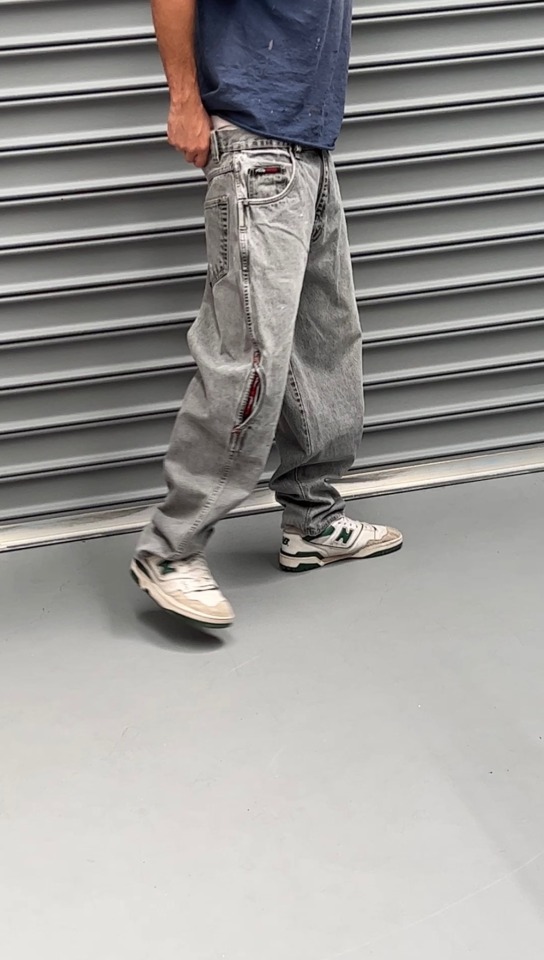
Baggy fubu jeans
#guys in jeans#hiphop#y2k fashion#vintage fashion#skater#skateboarding#vintage style#90s nostalgia#90s fashion
2 notes
·
View notes
Text

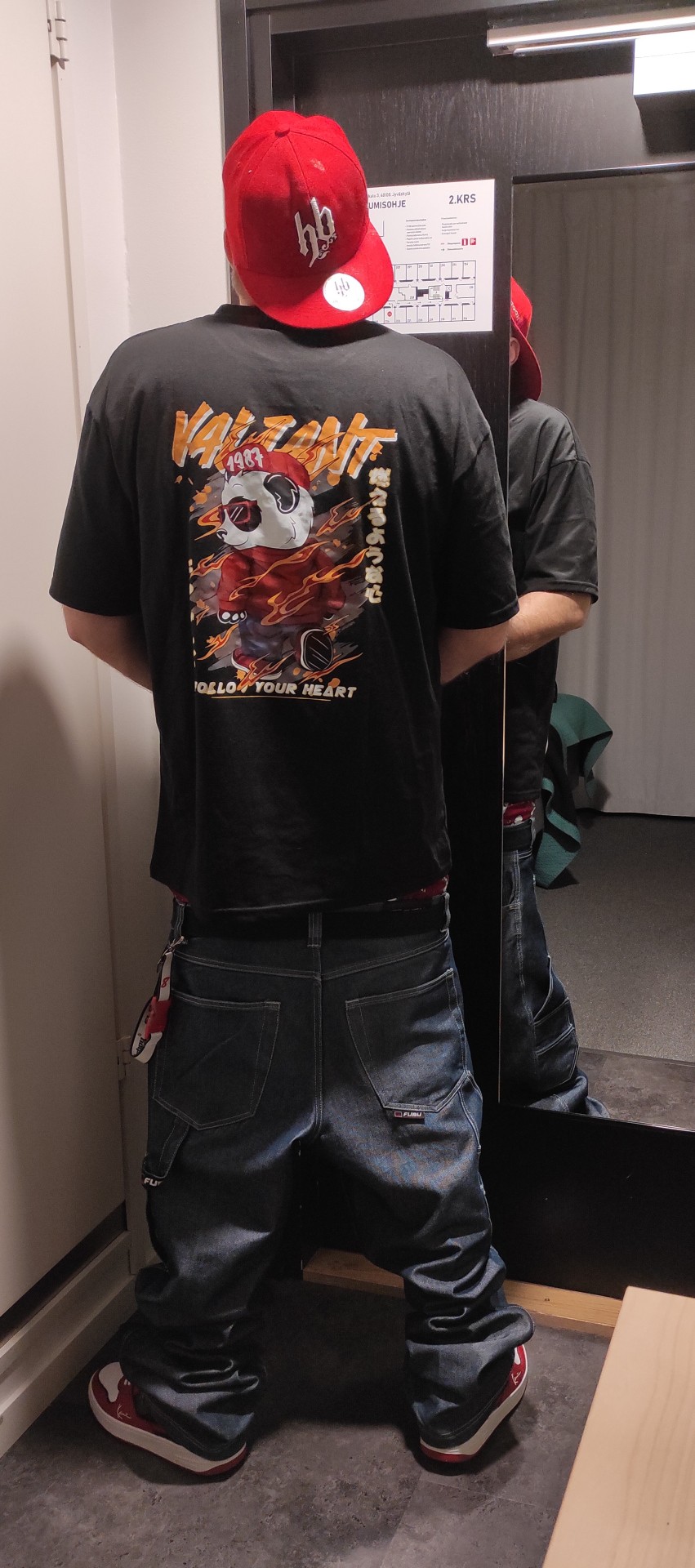

160 notes
·
View notes
Text
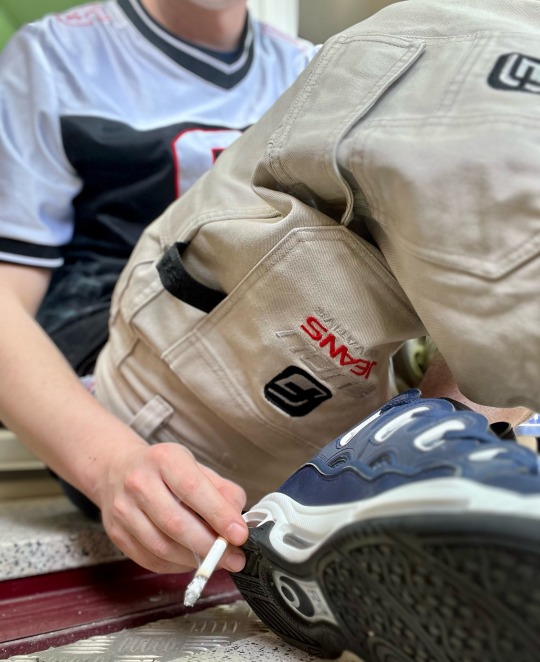
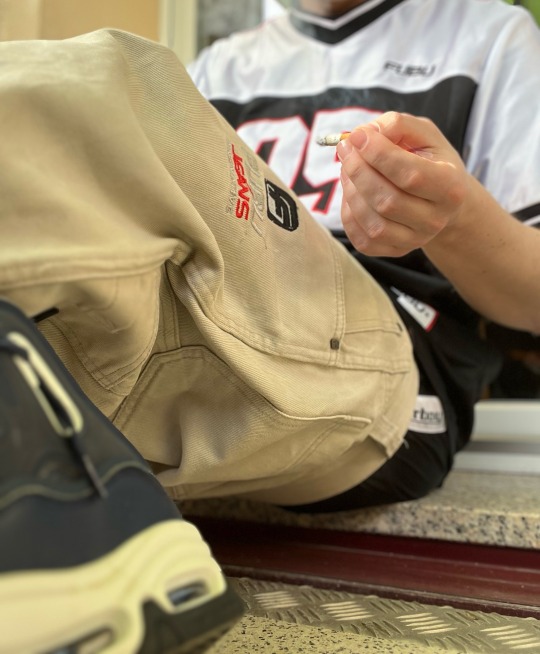
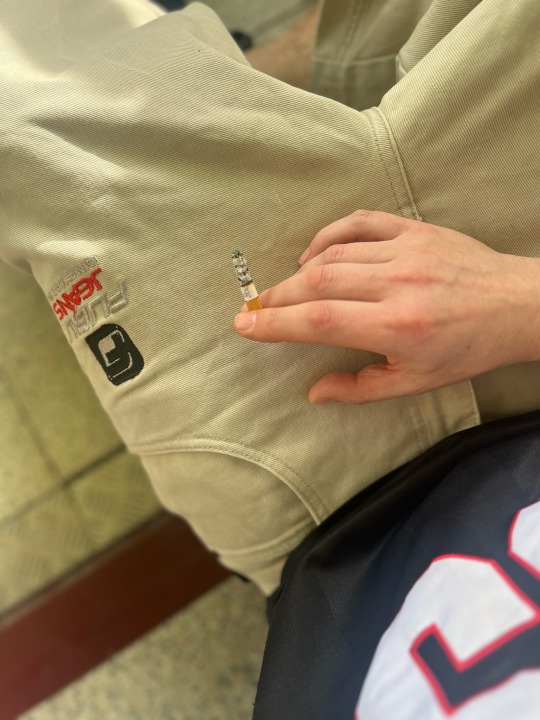
smoking and sagging in oldschool Fubu Innovative Baggyshorts
#gay smoker#sagging#smoking#osiris d3#fubu innovative#fubu baggy#fubu jersey#baggystyle#saggerboy#gay skater#gaysmoker#osirisd3#boysmoking
116 notes
·
View notes
Text
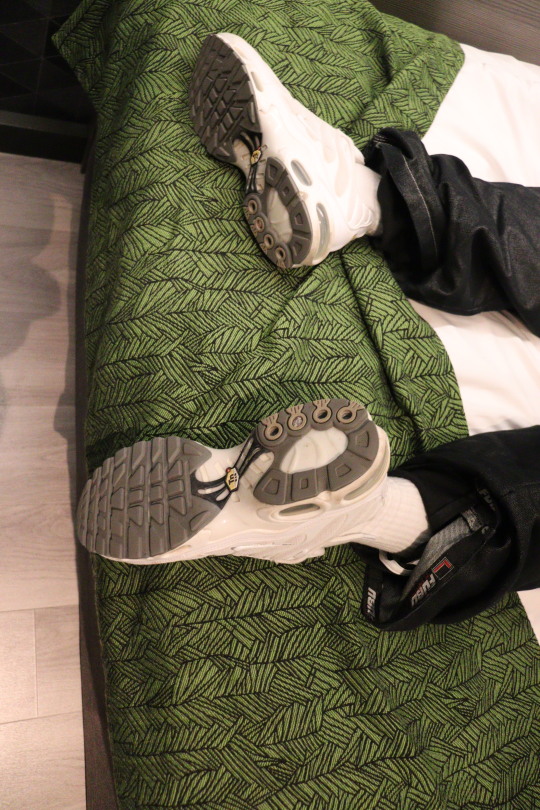
143 notes
·
View notes
Text
The Influence of Streetwear Clothing on Modern Fashion

Streetwear clothing has dramatically influenced the fashion landscape over the past few decades.
What began as a grassroots movement tied to urban youth culture has blossomed into a global phenomenon that impacts luxury brands, high fashion, and mainstream trends.
This article explores the roots of streetwear, its rise to prominence, and its profound influence on modern fashion.
The Origins of Streetwear Clothing
Streetwear clothing finds its origins in the late 1970s and early 1980s, primarily in urban centers like New York City and Los Angeles. It was heavily influenced by the skateboarding and hip-hop scenes.
Skateboarders in Southern California and hip-hop enthusiasts in New York City began to create a unique style that was practical, comfortable, and expressive. This early streetwear was characterized by baggy jeans, oversized t-shirts, hoodies, and sneakers.
One of the pivotal moments in the history of streetwear was the launch of Shawn Stussy's brand, Stüssy, in the 1980s. Stussy, a surfer who started by screen-printing his signature on t-shirts, quickly gained a following. His designs resonated with the youth, blending surf culture with urban aesthetics, laying the foundation for modern streetwear.
Streetwear Enters the Mainstream
The 1990s saw streetwear gaining momentum, as brands like Supreme, A Bathing Ape (BAPE), and FUBU entered the scene. Supreme, founded by James Jebbia in 1994, became synonymous with streetwear culture. Its limited releases, bold designs, and collaborations with artists and other brands created a sense of exclusivity and desirability.
Hip-hop artists played a crucial role in propelling streetwear into the mainstream. As hip-hop became a dominant force in popular music, the fashion associated with it gained widespread visibility.
Artists like Jay-Z, Tupac Shakur, and the Notorious B.I.G. were often seen sporting brands like Timberland, Tommy Hilfiger, and Polo Ralph Lauren, blending streetwear with elements of high fashion.
The 2000s: Streetwear's Global Expansion
The 2000s marked the global expansion of streetwear. Brands from Japan, such as A Bathing Ape (BAPE) and UNDERCOVER, began to influence the global fashion scene.

BAPE, founded by Nigo in 1993, became famous for its unique designs, camouflage prints, and iconic ape logo. The brand's popularity soared when celebrities like Pharrell Williams and Kanye West started wearing it.
Collaborations between streetwear brands and high fashion houses became more common during this period. One of the most notable collaborations was between Louis Vuitton and Supreme in 2017.
This partnership symbolized the fusion of streetwear and luxury fashion, showcasing how streetwear had gained legitimacy and respect within the high fashion community.
The Cultural Impact of Streetwear
Streetwear's influence extends beyond fashion; it has become a significant cultural force. It represents a blend of various subcultures, including skateboarding, hip-hop, punk, and graffiti art. This eclectic mix has created a style that is both diverse and inclusive, resonating with a wide range of individuals.
Streetwear has also democratized fashion. It challenges the traditional notion that high fashion is exclusive and inaccessible.
Streetwear brands often use social media and online platforms to reach their audience directly, bypassing traditional retail channels. This approach has allowed smaller, independent brands to thrive and compete with established fashion houses.
The Business of Streetwear
The business model of streetwear brands is unique and has significantly impacted the fashion industry. Limited releases, or "drops," create a sense of urgency and exclusivity.
These drops often sell out within minutes, creating a buzz and high resale value. Platforms like Ethereal core store and Grailed have emerged to facilitate the buying and selling of coveted streetwear items, further fueling the hype.
Collaborations are another crucial aspect of the streetwear business model. Brands frequently team up with artists, designers, and other brands to create limited-edition collections.
These collaborations generate excitement and allow brands to reach new audiences. For example, Nike's collaborations with Virgil Abloh's Off-White and Travis Scott have been immensely successful, blending streetwear aesthetics with the brand's athletic heritage.
Streetwear and Sustainability
As streetwear continues to grow, sustainability has become an increasingly important topic. The fashion industry is one of the largest polluters globally, and streetwear brands are beginning to address this issue.

Some brands are adopting sustainable practices, such as using organic materials, reducing waste, and promoting ethical production methods.
For instance, brands like Patagonia and Everlane are known for their commitment to sustainability. They prioritize transparency in their supply chains and use environmentally friendly materials.
Additionally, the rise of vintage and second-hand streetwear markets has contributed to a more sustainable approach to fashion. Consumers are increasingly seeking out pre-owned items, reducing the demand for new production.
The Future of Streetwear
The future of streetwear looks promising, as it continues to evolve and adapt to changing trends and cultural shifts. Technology will play a significant role in shaping the future of streetwear.
Virtual fashion shows, augmented reality (AR) shopping experiences, and blockchain technology for authenticating products are some of the innovations on the horizon.
Streetwear's influence is also expanding into other industries, such as sports, gaming, and entertainment. Collaborations between streetwear brands and sports teams or esports organizations are becoming more common, creating new opportunities for cross-promotion and fan engagement.
Moreover, as streetwear becomes more mainstream, it faces the challenge of maintaining its authenticity and cultural relevance.
Brands will need to stay true to their roots while also embracing innovation and diversity. The ability to balance exclusivity with accessibility will be crucial for the continued success of streetwear.
Conclusion
Streetwear clothing has profoundly impacted modern fashion, transforming from a niche subculture to a global powerhouse. Its influence can be seen in the way people dress, the business models of fashion brands, and the broader cultural landscape.
By blending elements of various subcultures and challenging traditional fashion norms, streetwear has created a unique and dynamic style that resonates with millions.
1 note
·
View note
Text
Breaking Down the Intersection of Hip Hop and Fashion: How Music and Style Collide:
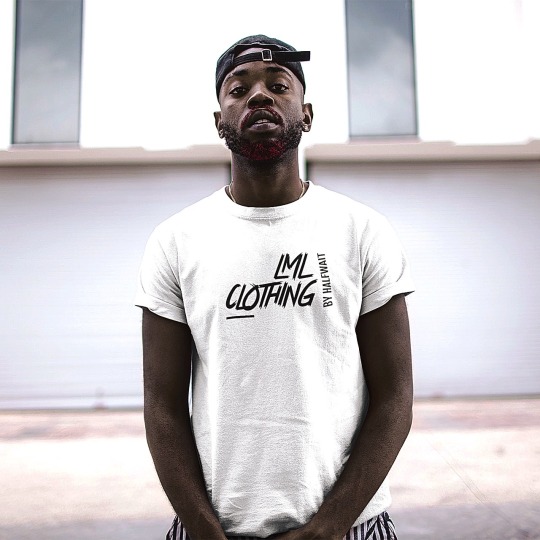
Hip hop and fashion have been intertwined for decades, with artists and designers alike using their creativity to push boundaries and make bold statements. From Run DMC's Adidas sneakers to Jay-Z's Rocawear clothing line, hip hop has had a major impact on the fashion industry. But the relationship between hip hop and fashion goes beyond just clothing and accessories. It's a cultural phenomenon that reflects the social and political climate of the time. This intersection has given birth to some of the most iconic trends in both industries, from oversized hoodies and baggy jeans to luxury streetwear and high-end collaborations. In this article, we'll be exploring the dynamic relationship between hip hop and fashion, and how they continue to influence and inspire each other today. Get ready to break down the beats and the threads, as we dive into the fascinating world of hip hop fashion.
The Brief History of Hip Hop Fashion:
Hip hop fashion emerged in the late 1970s and early 1980s, during the birth of hip hop music in the Bronx, New York City. At the time, hip hop was a subculture that was all about self-expression and individuality. And fashion was a big part of that. In the early days, hip hop fashion was defined by a few key elements: tracksuits, sneakers, Kangol hats, and gold chains. These items were all about making a statement and showing off your style.
As hip hop music continued to grow in popularity, so did hip hop fashion. The 1980s saw the rise of streetwear brands like FUBU and Cross Colours, which were designed specifically for the hip hop market. These brands embraced the bold, colorful, and oversized aesthetic that was popular in hip hop culture at the time. In the 1990s, hip hop fashion took on a more casual and relaxed look, with baggy jeans, oversized t-shirts, and hoodies becoming the norm.
Key Fashion Influences in Hip Hop Culture:
Hip hop fashion has been influenced by a variety of different sources over the years. One of the biggest influences has been the African diaspora, particularly the styles of West African and African American cultures. The use of bright colors, bold patterns, and traditional African textiles has been a staple of hip hop fashion since its inception.
Another major influence on hip hop fashion has been the world of sports. Athletes like Michael Jordan and Allen Iverson were known for their signature sneakers, which became must-haves for hip hop fans. And sports jerseys became popular in hip hop culture, as fans would wear the jerseys of their favorite teams and players as a way to show their support.
The Impact of Hip Hop Fashion on the Fashion Industry:
Hip hop fashion has had a profound impact on the fashion industry as a whole. It has introduced new styles, new aesthetics, and new ways of thinking about fashion. Hip hop fashion has also challenged traditional notions of what is considered fashionable or stylish. For example, the baggy jeans and oversized t-shirts that were popular in the 1990s were seen as unfashionable by many in the mainstream fashion world. But hip hop fans embraced these styles as a way to express themselves and their individuality.
Hip hop fashion has also made streetwear a legitimate part of high fashion. Luxury brands like Gucci, Louis Vuitton, and Balenciaga have all embraced streetwear aesthetics in recent years, creating high-end versions of hoodies, sneakers, and other hip hop staples. These collaborations between hip hop and high fashion have helped to bridge the gap between the two worlds, bringing hip hop fashion to a wider audience.
The Role of Music Videos in Hip Hop Fashion Trends:
Music videos have played a significant role in shaping hip hop fashion trends over the years. In the early days of hip hop, music videos were a way for artists to showcase their style and their culture to a wider audience. For example, Run DMC's "My Adidas" music video helped to popularize Adidas sneakers in the hip hop community.
As hip hop music and fashion have become more intertwined, music videos have become even more important in shaping hip hop fashion trends. Videos like Missy Elliott's "The Rain (Supa Dupa Fly)" and Outkast's "Hey Ya!" have become iconic not just for their music, but for their fashion as well. These videos have introduced new styles and aesthetics to the hip hop world, and have helped to define what is considered fashionable or trendy within the community.
Hip Hop Fashion in the Mainstream:
Hip hop fashion has come a long way from its early days as a subculture. Today, it is a major part of mainstream fashion and culture. Hip hop fashion is everywhere, from the streets to high fashion runways. It has influenced everything from athletic wear to luxury fashion, and has become a multi-billion dollar industry in its own right.
But with this mainstream success comes a challenge for hip hop fashion. As it becomes more popular and more commercialized, there is a risk that it could lose the authenticity and individuality that made it so special in the first place. Some critics argue that the mainstreaming of hip hop fashion has led to a homogenization of style, with everyone wearing the same brands and the same looks.
The Most Iconic Hip Hop Fashion Moments:
Hip hop fashion has had many iconic moments over the years. Here are just a few:
*
* Run DMC's Adidas sneakers: In the 1980s, Run DMC helped to popularize Adidas sneakers in the hip hop community. They even wrote a song about it, "My Adidas," which became an anthem for sneakerheads everywhere.
* LL Cool J's Kangol hat: LL Cool J was known for his signature Kangol hat, which became a must-have item for hip hop fans in the 1980s.
* Tupac's bandana: Tupac was famous for wearing a bandana tied around his head, a look that became synonymous with West Coast hip hop.
* Biggie's Coogi sweater: In the 1990s, Biggie Smalls made Coogi sweaters a hip hop fashion staple, and they remain popular to this day.
* Jay-Z's Rocawear: In the early 2000s, Jay-Z launched his own clothing line, Rocawear, which became one of the most successful hip hop fashion brands of all time.
The Future of Hip Hop Fashion:
Hip hop fashion is constantly evolving, and it's impossible to predict where it will go next. But one thing is for sure: hip hop fashion will continue to be a major influence on the fashion industry and on popular culture as a whole. As hip hop music continues to evolve and expand, so too will hip hop fashion.
One trend that is likely to continue is the mainstreaming of hip hop fashion. As more and more people embrace hip hop style, it will become even more ubiquitous in the fashion world. But at the same time, there will always be a place for the individuality and authenticity that made hip hop fashion so special in the first place.
Famous Collaborations between Hip Hop Artists and Fashion Brands
Over the years, many hip hop artists have collaborated with fashion brands to create their own clothing lines or to promote existing brands. Here are some of the most famous collaborations:
*
* Kanye West x Adidas: Kanye West's Yeezy line with Adidas has become one of the most successful collaborations in hip hop fashion history.
* Jay-Z x Reebok: Jay-Z's collaboration with Reebok in the early 2000s resulted in the iconic S. Carter sneakers.
* Pharrell Williams x Chanel: Pharrell Williams collaborated with Chanel to create a line of sneakers and accessories that combined hip hop style with high fashion.
* Rihanna x Puma: Rihanna's collaboration with Puma resulted in the popular Fenty line of sneakers and clothing.
* Travis Scott x McDonald's: Travis Scott's collaboration with McDonald's resulted in a limited edition meal and merchandise line that sold out almost instantly.
Conclusion:
Hip hop and fashion have always been intertwined, with each influencing and inspiring the other. From the early days of tracksuits and Kangol hats to the current era of luxury streetwear and high-end collaborations, hip hop fashion has come a long way. It has challenged traditional notions of what is considered fashionable or stylish, and has introduced new styles and aesthetics to the fashion world. And as hip hop music continues to evolve and expand, so too will hip hop fashion.
#wholesale clothing#fashion#wholesale#apparel#clothing#online store#streetwear#brand#online shopping#urban streetwear#womensfashion#menswear#lifestyle#hoodies#tees#sweatshirts#entertainment#hip hop#trending#footwear#activewear
0 notes
Link
Check out this listing I just added to my Poshmark closet: Y2K Skater Patchwork FUBU Jean Shorts (Jorts).
0 notes




